“Houston…we have a slime bomb,” announced NASA Astronaut Christina Koch as the shiny green orb floated mid-air aboard the International Space Station (ISS) 250 miles above the earth. “SLIME!!!” screamed the students conducting parallel experiments at Nickelodeon, the beloved TV network responsible for covering countless celebrities in day-glow goop. And with those words, the very first slime experiments ever were performed in orbit, echoed on Earth, and led by a record-breaking female astronaut. Être, a mentorship platform for middle school girls, had only a zillion questions.
First of all, what actually IS slime?
When Nickelodeon challenged friends like Olympic Gold Medalist Laurie Hernandez, legendary skateboarder Tony Hawk, singer Baylee Littrell and the WWE’s Bella Twins to define slime, a variety of hilarious answers came back. But, according to the official Nickelodeon definition, slime is “a mixture of ingredients that come together to create a polymer substance.”
And why does it react so differently in space?
Because slime is considered a non-Newtonian fluid, which means that it’s thicker and more viscous than water. “We have a pretty good understanding of how water reacts in space,” explained ISS scientists, “but we know less about how other thicker substances like non-Newtonian fluids react to the space environment.” “This investigation,” they continued, “sought to explore how non-Newtonian fluids behave in space. Nickelodeon worked in collaboration with the ISS National Lab to carry out a series of STEM demonstrations on the ISS to see how slime in space behaves.”
So much more fun than a typical science experiment!
Actors from the cast of All That, singers like Darci Lynne Farmer and Ally Brooke, and athletes like Lindsey Vonn and PK Subban appearing in Nickelodeon’s Slime In Space Virtual Field Trip video agreed wholeheartedly, as did participating astronauts Christina Koch, Luca Parmitano, Andrew Morgan and Don Pettit.
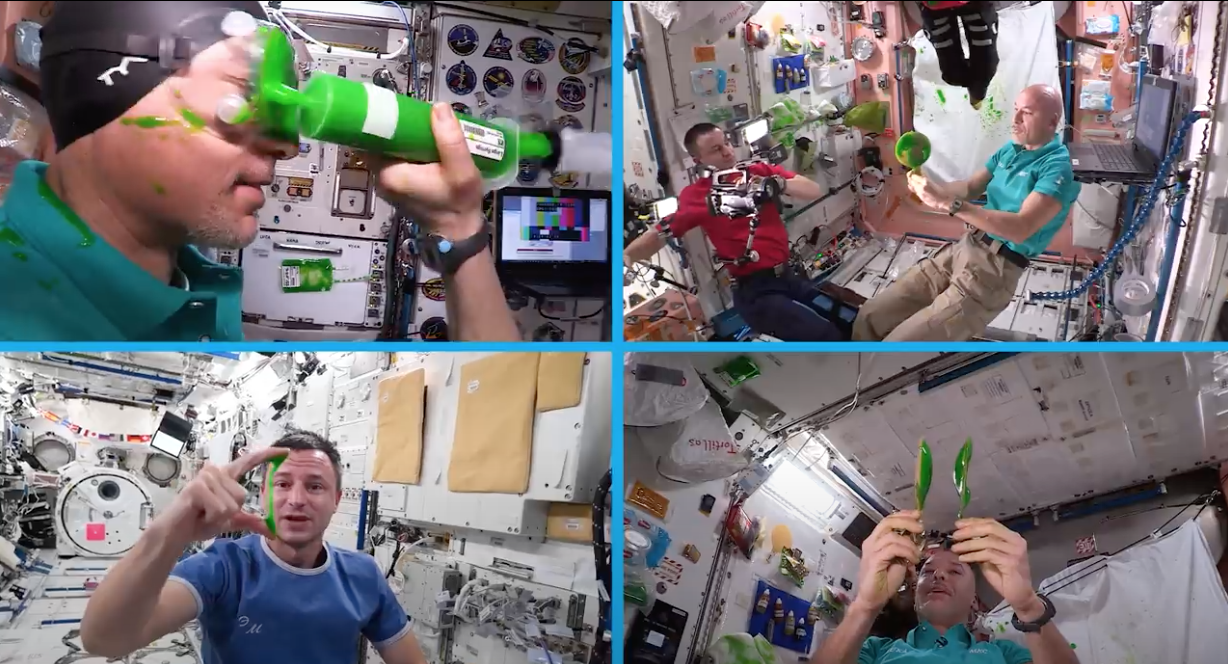
Watching what happens when slime is shot out of a syringe, bounces between hydrophobic paddles or bursts out of a balloon in microgravity and then on Earth provided excitement and true scientific education for all involved.
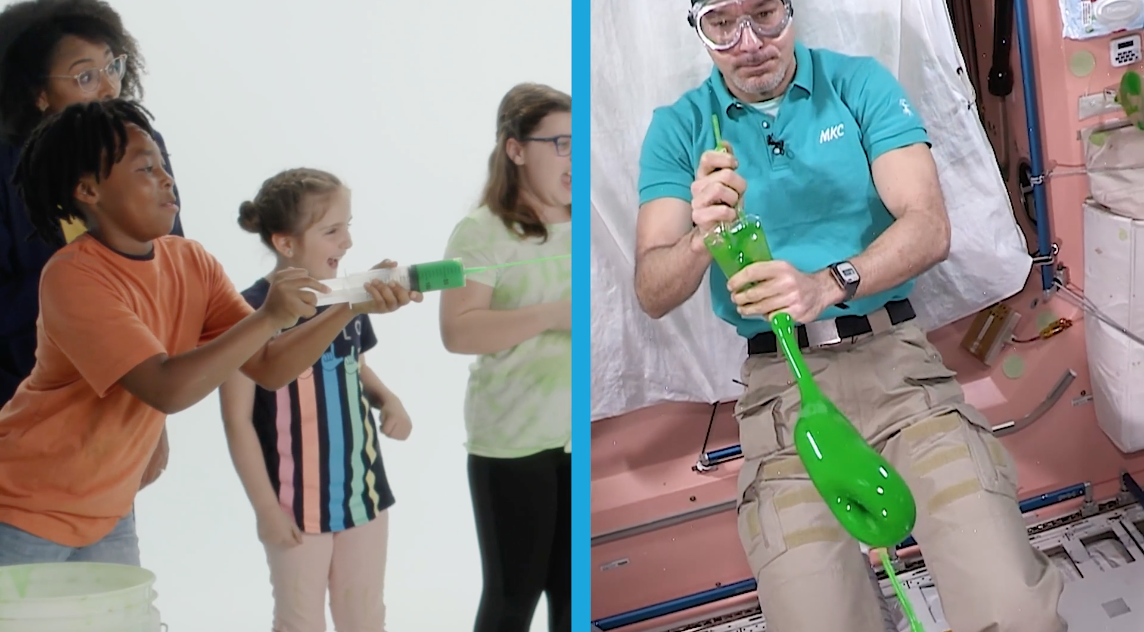
Which is exactly what Nickelodeon intended. “The Slime in Space Virtual Field Trip is the culmination of four years of collaboration across so many teams at Nickelodeon, NASA, and the International Space Station U.S. National Laboratory,” remarked Andrew Machles, Vice President, Nickelodeon Public Affairs and Viewer Services. “We’re in a time when educators and parents are in need of resources to keep kids both learning and entertained, so we hope these STEM-focused educational tools we’re releasing can help inspire the next generation of scientists.”
Consider us inspired.
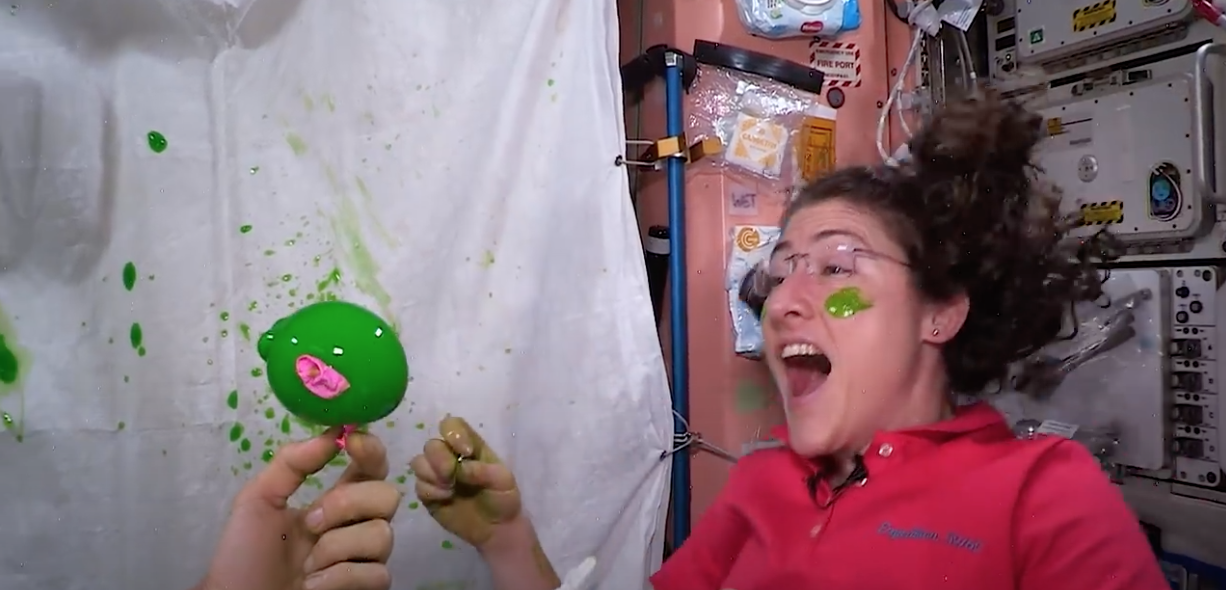
“I thought for sure [the slime] was going to explode in that balloon, but it’s so viscous and sticky it had enough tension to stay together!”
Christina Koch
So inspired, in fact, that we had additional questions for Christina Koch, since her slime experience came both in the middle of her record-breaking 328 days in orbit and during the COVID-19 pandemic on Earth. We had to ask:
What does it mean to you, having left the Earth one way and coming home to a global pandemic?
CK: Having seen the Earth from above, I was able to witness how the Earth unites all people in that it provides us all with what we need to live and thrive on a global scale. Seeing the Earth in its place in the universe and the thin blue line of our atmosphere against the vastness of space made me realize how precious our planet is. The global pandemic is one example of the balance and complexity of Earth’s systems and how important it is to understand them so that when the unexpected happens, we have the reserves and knowledge to respond together.
We heard you had the longest recorded continuous stay on the ISS for any female! What were the most memorable moments for you? Some of us think it has to be the three all-women spacewalks (the first ones EVER) you did with Jessica Meir – are we right?
CK: YES! My spacewalks were a main highlight of my mission. Hundreds of people and hours are involved in making a spacewalk happen and it is an honor to be a part of the ultimate team sport and see it all culminate in a successful event to keep upgrading the International Space Station. We felt so grateful for those that paved the way for us, privileged to be astronauts at a time when we are committed to exploration for all and by all, and honored to hopefully inspire the next generation of explorers.
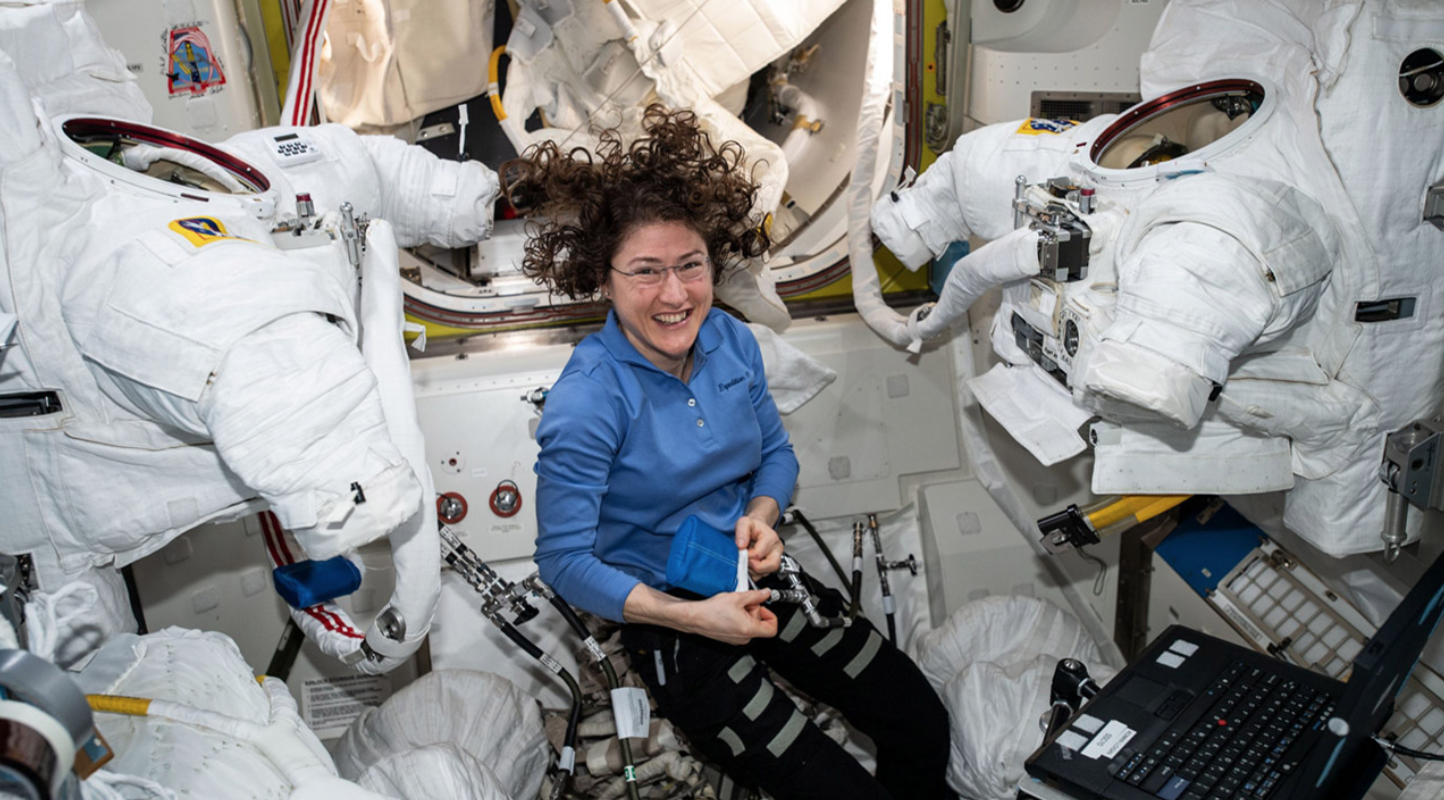
That spacewalk was special for many reasons. Not only was it the first all-female spacewalk, but it was a contingency spacewalk that was completely planned and executed within a week! Other highlights were that we got to ride on the robotic arm and it was my only spacewalk leading someone on their first spacewalk, so it was wonderful to see it for the first time through Jessica’s eyes.
What does it feel like on a spacewalk? What are you thinking and do you think it changed you forever?
CK: I’ll never forget the moment when I first came out of the hatch of the space station into the blackness of space. It is an exceptional and awesome experience. It feels like a culmination of all that you have worked hard for, all that you have hoped to contribute to, and all the skills that you have acquired. The setting is breathtaking, but our tasks are so specific and coordinated that we don’t spend much time looking around and instead focus on the job at hand. It changed me because it brought a profound sense of fulfillment being able to give back in a way that I have been working towards my entire life.
We’ve learned about some of the microgravity experiments currently being conducted in orbit – what kinds of new research do you think will be coming to space station next?
CK: Some of the exciting new research will help us push the boundaries and frontiers even farther into space. NASA is currently working on sending the first woman and the next man to the Moon through a mission called Artemis and many of our experiments on the space station are helping us do that. Testing technologies for life support systems, made-in-space manufacturing, and the long term effects of the space environment on the human body are just a few examples. After returning to the Moon to stay, we plan to apply those technologies to a future mission to Mars.
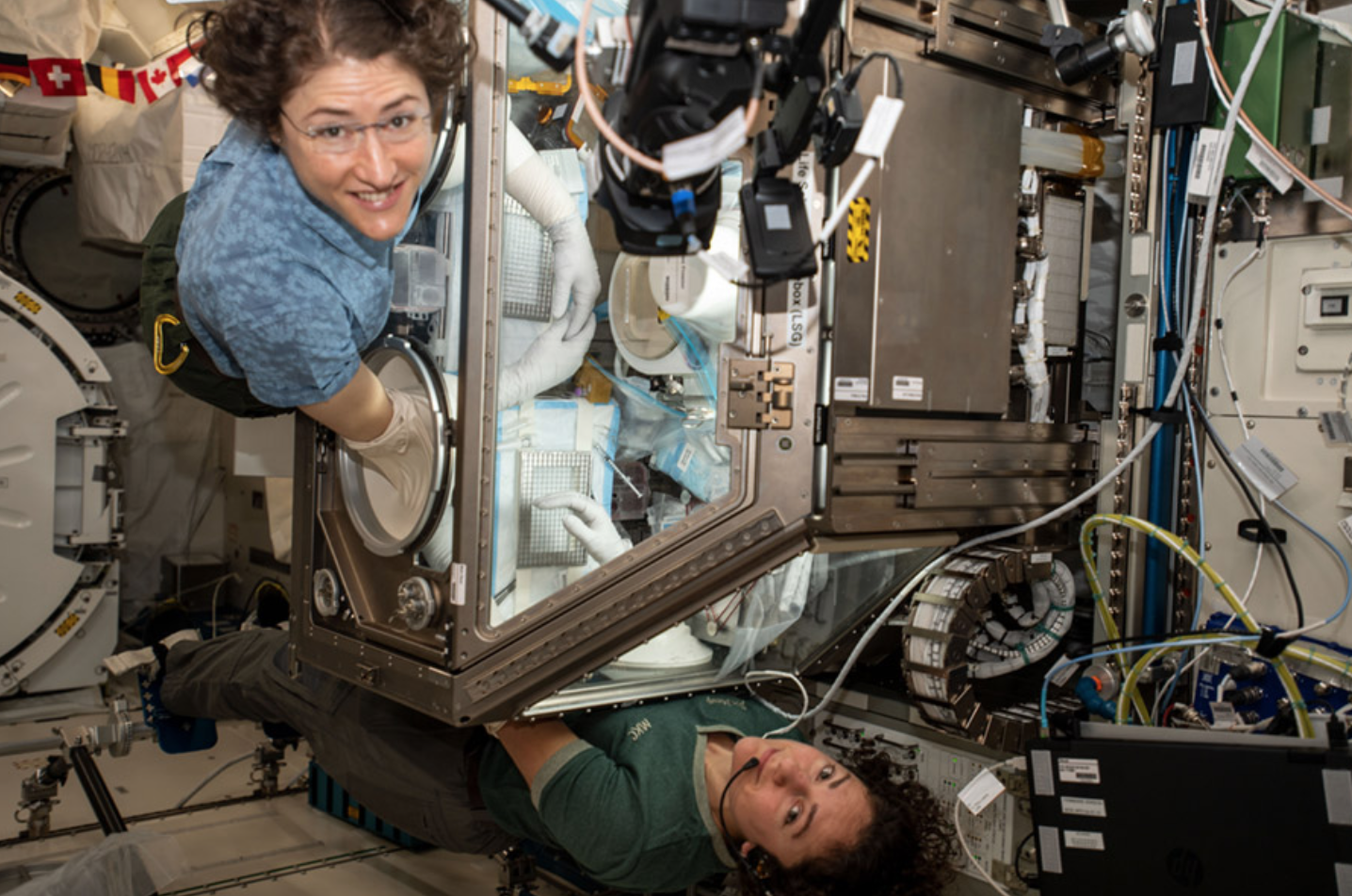
It’s hard for us to imagine, being in quarantine right now, but what advice would you give girls our age who want to go to into space someday?
CK: First off, follow your passions and be true to yourself. Imagine how you want your future life to be and work toward that dream. Secondly, do what scares you. What are the things that intrigue you but might feel like they are just outside of your reach? Go for those things. Accept that failure along the way is a good thing because it means you are pushing yourself. Finally, support each other. When we support each other in pursuing the things we love, we achieve the most for the world and we feel the best as we do it.
From slime in space to quarantine advice, NASA astronaut Christina Koch is inspiring girls everywhere. To read more about the dozens of experiments she conducted on her mission (both slime and non-slime related), head over to the ISS National Lab site. To access ingenious at-home experiments students can perform during social distancing, check out ISS’ Space Station Explorers and Nickelodeon’s brand new #KidsTogether resources. And to stick with big dreams in the face of pandemics or unexpected obstacles, look back to Christina Koch’s words.
Imagine how you want your future life to be and work toward that dream.
Dreams – like slime – take on new shapes when we send them skyward, girls. So stay curious, ask every question, and stop at nothing to find the answers.
A universe of possibility awaits.
* * *
Être is a mentorship platform for today’s motivated girls. We are grateful to Christina Koch and every role model at NASA, Nickelodeon and the ISS U.S. National Lab for answering the questions of curious girls.


